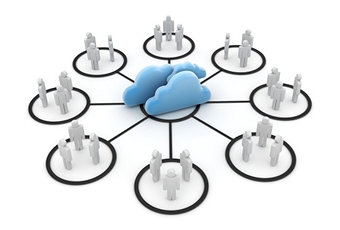An Overview of Application Software
If you have ever typed in a document using a word processor or made numerical entries and calculations in a database file, then you have had experience trying out the various computer application software that are either installed in your computer’s hard drive or accessible remotely on cloud servers. In a nutshell, application software can either consist of a single program or a set of related programs run by your computer designed to carry out either a single specialized task, or more commonly a group of interconnected tasks.

In this age of information technology, the average computer user is bombarded by a variety of computer programs or application software, many of which basically have near identical functions, and as the requirements of the end user continues to grow, more and more iterations of these software can be expected in the days to come. A little background information about these types of application software can make the process of selecting which types of programs or software to install in personal CPUs or servers or purchase access to from cloud computing services that provide software as a service via remote cloud servers.
There are several main categories of application software.
Enterprise resource planning software comprises computing solutions which are geared towards meeting the needs of any organization in terms of facilitating the input and sharing of necessary information between its different sectors. In a hospital or medical clinic, this could refer to the insurance and billing software. In an online multiplayer role-playing game portal, this could be the system that handles technical or customer support. In e-commerce sites, it could be the inventory system.
On the other hand, enterprise infrastructure software provides additional functional support for the various software systems used by an organization. Email servers, databases, security systems, and network management systems fall under this category. Get more helpful tips at www.serverspace.co.uk.
Content access software allows users to view or access content, such as documents, images, videos, audios, etc., without allowing the user to modify it. Common examples include media players, flash players, game consoles, e-book readers, and even the internet browser you are using right now.
Media development software allows one to create the different types of media, electronic and otherwise, for use. These include graphic design software, painting software, image, audio, and video editing software, publishing software, music composition software, and the like.
As its name implies, educational software are specifically intended for use by educators and students. Online learning programs is a burgeoning business where it is possible for one to learn an entirely new language using the appropriate application software, take mock tests, or even interactive classes online with classmates from around the globe. One can enroll in online classes and manage and track their coursework using relevant educational software.
Collaborative software allows several users to utilize the software which is web-based more often than not. Examples include web-based email exchange clients, online project management software such as Basecamp, mindmapping tools, document and media management software, and social media software platforms.
Then we have application suites where several distinct applications that have a universal user interface and some degree of shared functionality are offered together as one package. The most popular examples include Microsoft Office, Lotus Smart Suite, iWork, Open Office, SeaMonkey internet suite, etc.
As a result of the bewildering array of application software offered online and offline as freeware or for purchase, individuals can opt to select that one specialized type of software that performs the required task exceptionally well and is simple to use or choose suites or other software programs that provide a wider range of functions instead. In case of the latter though, one would have to make provisions for learning the various features and functions of these types of software which are often times significantly more complex.